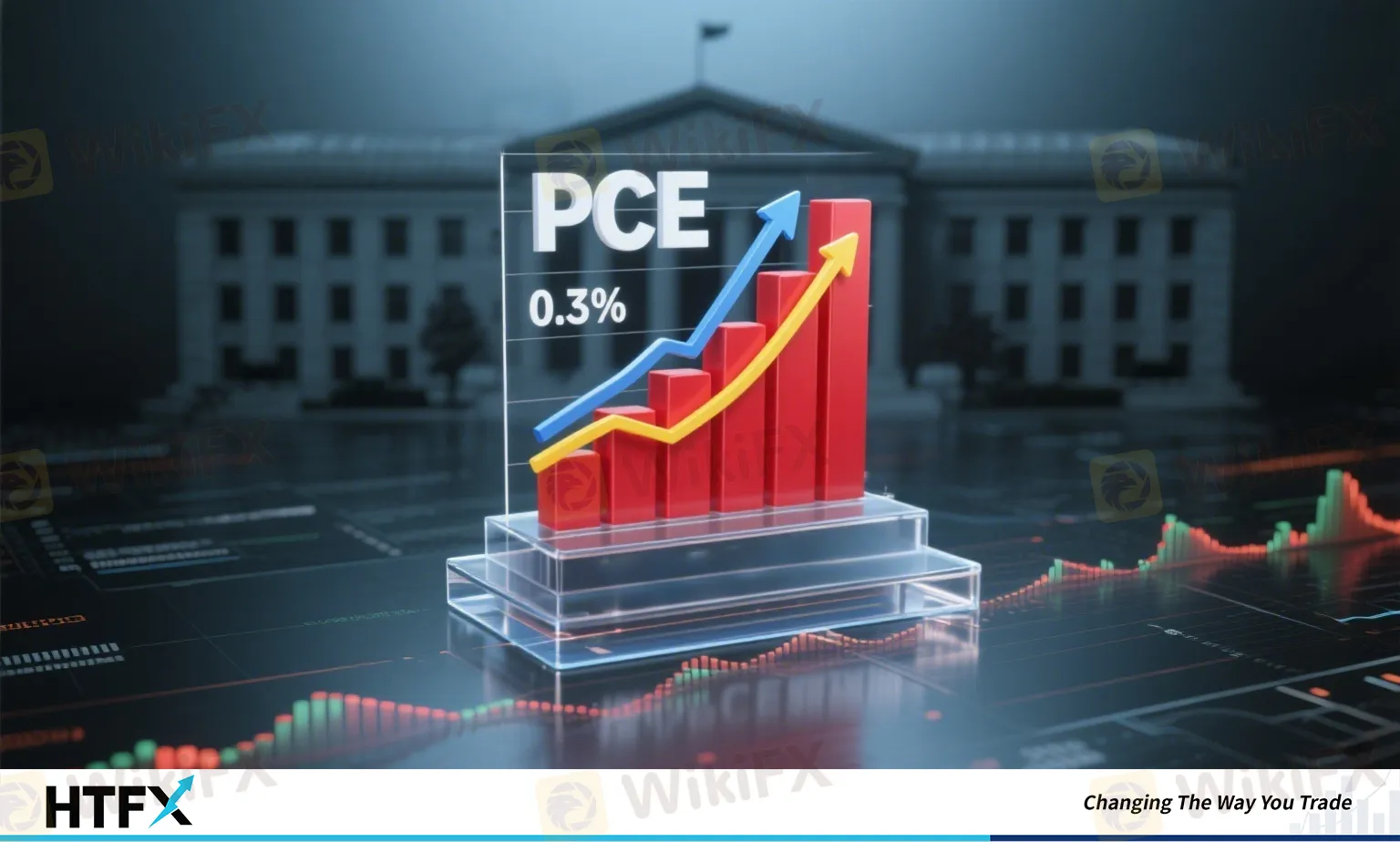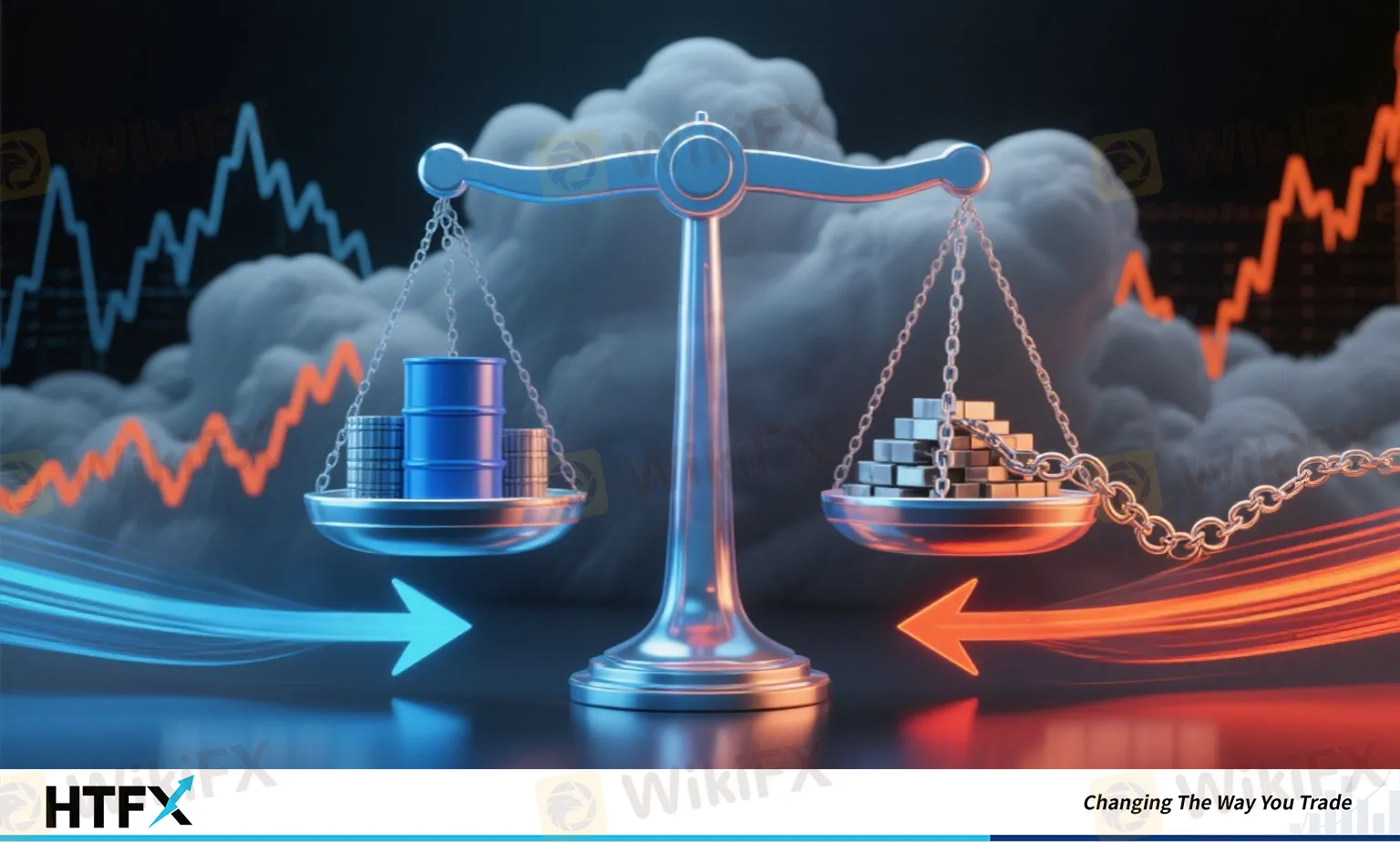简体中文
繁體中文
English
Pусский
日本語
ภาษาไทย
Tiếng Việt
Bahasa Indonesia
Español
हिन्दी
Filippiiniläinen
Français
Deutsch
Português
Türkçe
한국어
العربية
HTFX Market Insights: New Trading Opportunities Amid Global Macro Trends
Abstract:Federal Reserve Policy Shift Spurs FX VolatilityLast week, the U.S. Commerce Department reported on July 31 that the June Personal Consumption Expenditures(PCE) Price Index rose 0.3% month-on-month, w
Federal Reserve Policy Shift Spurs FX Volatility
Last week, the U.S. Commerce Department reported on July 31 that the June Personal Consumption Expenditures(PCE) Price Index rose 0.3% month-on-month, with core PCE also up 0.3% and 2.8% year-on-year—above market expectations—showing persistent inflationary pressure. The July 30 FOMC minutes noted that, facing both inflation and slowing growth, the Fed will keep the federal funds rate at 5.25%–5.50% and remain cautious about rate cuts. This drove the U.S. dollar index to multiyear highs, triggering sharp moves in major pairs such as EUR/USD and USD/JPY, and boosting both risk-off and carry-trade flows. In the near term, FX markets may stay highly volatile; traders should watch every upcoming U.S. macro release.

Emerging Market Central Bank Decisions Create Regional Currency Opportunities
Against a backdrop of tightening global monetary policy, several emerging-market central banks also made moves last week. On August 1, Brazil‘s central bank raised its benchmark rate by 25 basis points to 13.75% to curb persistent inflation, while Indonesia’s central bank held its policy rate at 7.00% but signaled it would tighten further if needed. In the 24 hours after these announcements, the real and rupiah weakened roughly 1.2% and 0.8% versus the dollar, respectively. With risk appetite improving and rate differentials in play, volatility in currencies like the Brazilian real and Indonesian rupiah has picked up, offering fresh arbitrage and diversification opportunities.

OPEC+ Production Increase Expectations Reshape Commodity Landscape
On August 3, OPEC+ agreed to boost output by 547,000 barrels per day from September, ending its voluntary cuts. Brent briefly dipped toward USD 70 per barrel on this news. However, Middle East geopolitical tensions—especially residual Iran–Israel conflict risks—and anticipated further U.S. sanctions on Russian energy continue to support oil prices. Meanwhile, Chinas manufacturing slowdown last week weighed on industrial metals such as copper and aluminum. Going forward, commodities may swing between “bearish due to higher output” and “bullish on geopolitical risk,” so traders must monitor both supply fundamentals and political developments.

Partner with HTFX: Safe, Compliant, Steady Progress
With opportunities and risks coexisting, choosing a secure, compliant, and technologically advanced partner is vital. HTFX has specialized in FX and commodity trading for years and holds multiple regulatory licenses. Our platform uses multi-layered risk controls and 24/7 monitoring to detect abnormal trades and market exposures in real time, safeguarding client funds and data. Whether the Feds policy stance shifts, OPEC+ adjusts production, or regional central banks act, HTFX combines rigorous compliance with cutting-edge tools to help you capture every investment opportunity with confidence.
Disclaimer:
The views in this article only represent the author's personal views, and do not constitute investment advice on this platform. This platform does not guarantee the accuracy, completeness and timeliness of the information in the article, and will not be liable for any loss caused by the use of or reliance on the information in the article.
WikiFX Broker
Latest News
D. Boral Capital agrees to a fine as a settlement with FINRA
Beware of Fake RS Finance: How to Spot Scams
Fortune Wave Solution: SEC Warns of Investment Scam
Is TD Ameritrade Safe? How to Spot Fake URLs and Stay Protected
Engineer Loses RM230,000 in “Elite Group” Investment Scam
Is Learning Forex Trading Online a Good Idea? Pros and Cons Explained
TradexMarkets: 5 Troubling Signs You Shouldn’t Ignore
A Guide to Buy Stop vs Buy Limit in Forex Trading
SEC Implements New Rules for Crypto-Asset Service Providers
Investment Scam Alert: FCA Identifies 15 Scam Brokers
Currency Calculator


